The History of ...

Located at Kelham Island and forming part of its nationally-important Conservation Area, the Globe Works sits at the heart of the industrial and cutlery development in Sheffield; the Steel City.
The Globe Works is a former purpose-built, integrated cutlery works, which is Grade II* listed. Its designation at Grade II* reflects its significance nationally, being of more than special interest.
The Works was commissioned in 1824, and has a rich and exciting history, from prosperous starts, across explosive incidents, through decline and onto new beginnings.
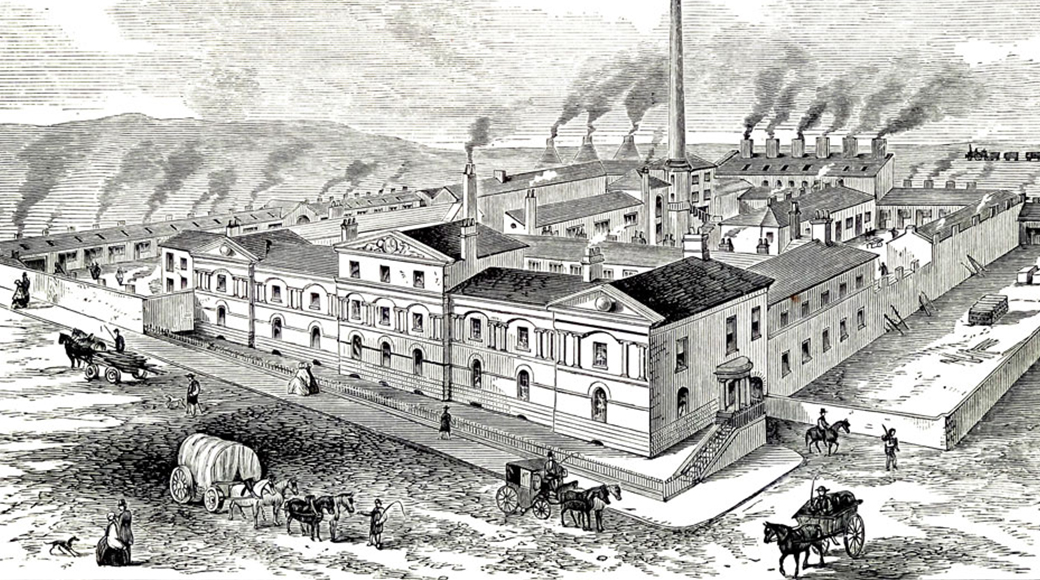
1820s
Prior to 1823, the processes of steel production and cutlery manufacturing were carried out separately, by different companies at different sites. This all changed after the completion of the Sheffield and Tinsley Canal in 1819, after which the first large integrated works was constructed adjacent to the canal. It was hugely successful, and so the number of integrated works quickly increased.
One of these early integrated works was the Globe Works.
The Globe Works was commissioned and constructed for ‘Ibbotson and Roebuck’, and was completed in 1825. Ibbotson and Roebuck were previously listed at Bower Spring in 1821 and the company included the brothers-in-law William and Henry Ibbotson and Jonathan Roebuck.
When opened, they were marketed as ‘…merchants of edge tools, jointers tools, fenders, saws, scythes, stove grates, &c. Globe Works’.
The company had great success in feeding America’s demand for crucible steel, saws, files, edge tools and knives.
Shortly after, in 1827 Jonathan Roebuck left the company to start his own business, leaving William and Henry to continue at the Globe Works as the Ibbotson Brothers Company.
The Globe Works represents an early example of large integrated works, which when first opened produced steel, which was then used to make a variety of edge tools and associated products, all at the same site. The Works was originally a larger complex and included the neighbouring buildings forming the now Grade II listed Cornish Works.

1830s
Despite the early boom for the Ibbotson Brothers, the firm was severely affected by financial crises from 1837.
Henry Ibbotson had moved to New York in the early 1930s to market the firm’s steel and products, which by this time also included the Bowie knife. In 1833 Henry married and settled in the US, and in 1837 the partnership with William was dissolved.
William continued the business without Henry, but by the late 1830s, exporting to the US was becoming more difficult due to the increasing competition of American based tool manufacturers.
Charles Cammell: Sheffield steelmaking giant
Charles Cammell, one of the steelmaking giants, was born in Hull, and came to Sheffield in 1830 at the age of 21. He found work at the Globe Works with the Ibbotson Brothers firm, initially as a commercial traveller, in which he proved eminently successful.
He left the company in 1837 and set up a new business with Thomas Johnson under the title ‘Johnson, Cammell & Company’ as steel and file manufacturers and merchants. The firm prospered. After Johnson’s death in 1855, Cammell continued under Charles Cammell & Company and by 1861 commenced in the manufacturing of rails and railway material, followed by armour plates.
Charles Cammell died in 1879, but the company (and his name) continued and in 1903 it merged with Laird Brothers, shipbuilders in Birkenhead, and became ‘Cammell Laird & Co Ltd.’ This enabled the company to begin manufacturing armoured warships. Later, in 1929, it merged with Vickers Ltd to form ‘Metropolitan-Cammell Carriage and Wagon Co Ltd’. It wasn’t until 2001 that the company was acquired by A&P Shiprepair.
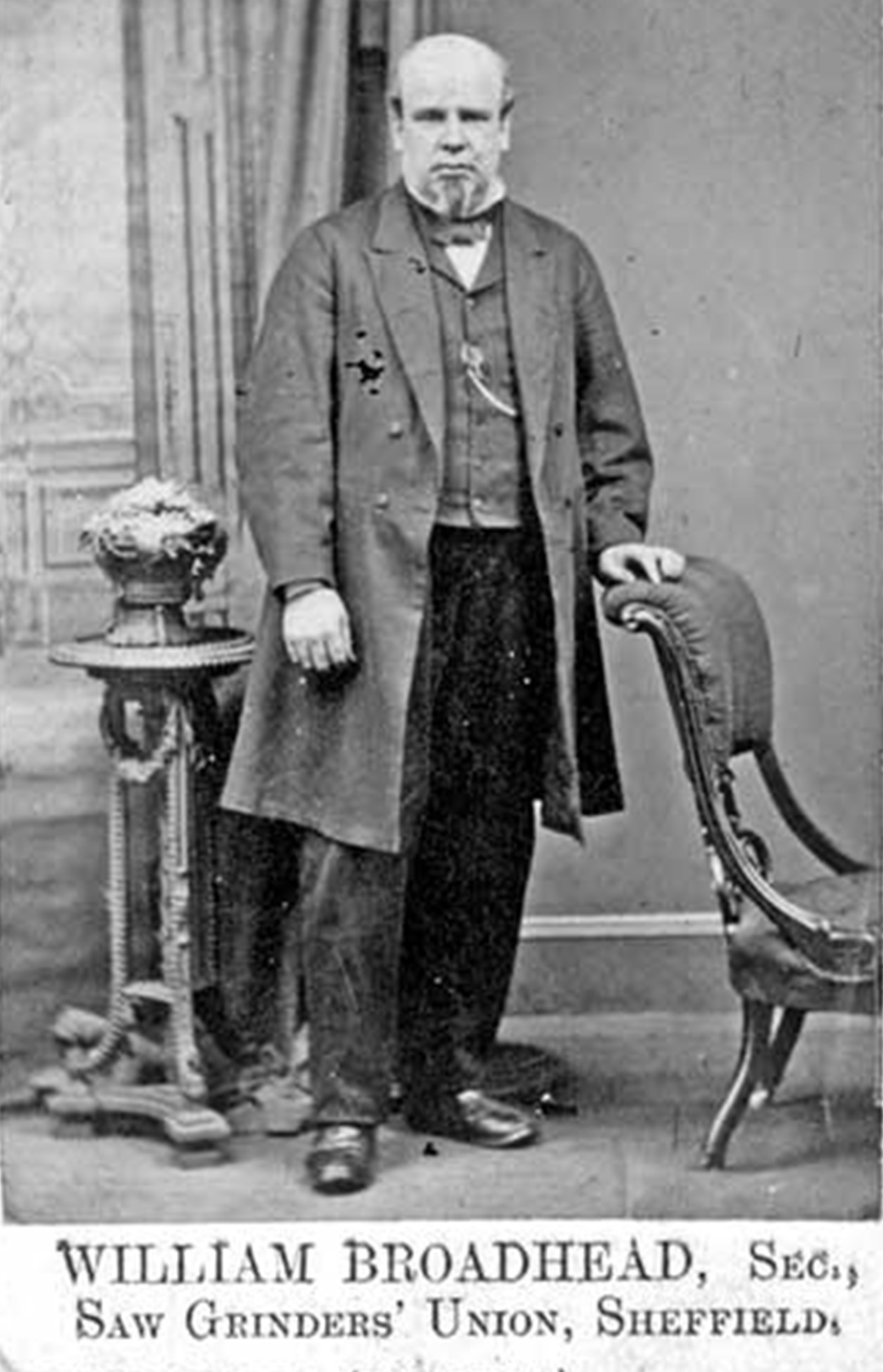
1840s
William Ibbotson acquired something of a reputation for being a ruthless businessman, which came to the fore during the 1840s depression. The Ibbotson Brothers Company was encountering financial difficulties and William was notorious for undercutting prices, thereby fueling unease amongst the industry. These tactics also angered workers whose wagers were lowered in order to compete. With this, and along with the firing of a group of workers for their ‘loose habits’, the situation came to a head in 1843.
In retaliation, a few small groups of workers joined together to form a secret organisation of saboteurs, known as the ‘Sheffield Ratteners’. The group would attack and damage factories and warehouses of unfair employers and non-union workers.
On 30th September 1843, the Globe Works was targeted and a bomb was thrown through a cellar window at the Works which caused substantial damage.
By 1845, William Ibbotson was bankrupt, with the Globe Works passed over to the Sheffield and Hallamshire Banking Company. The huge site was broken up to form four separate sites, including the now Cornish Works to the northeast and Wharncliffe Works to the southeast. Ibbotson Brothers Company remained operating the core of the Globe Works, with William rationalising the business, and relinquishing table knife manufacturing in 1849.
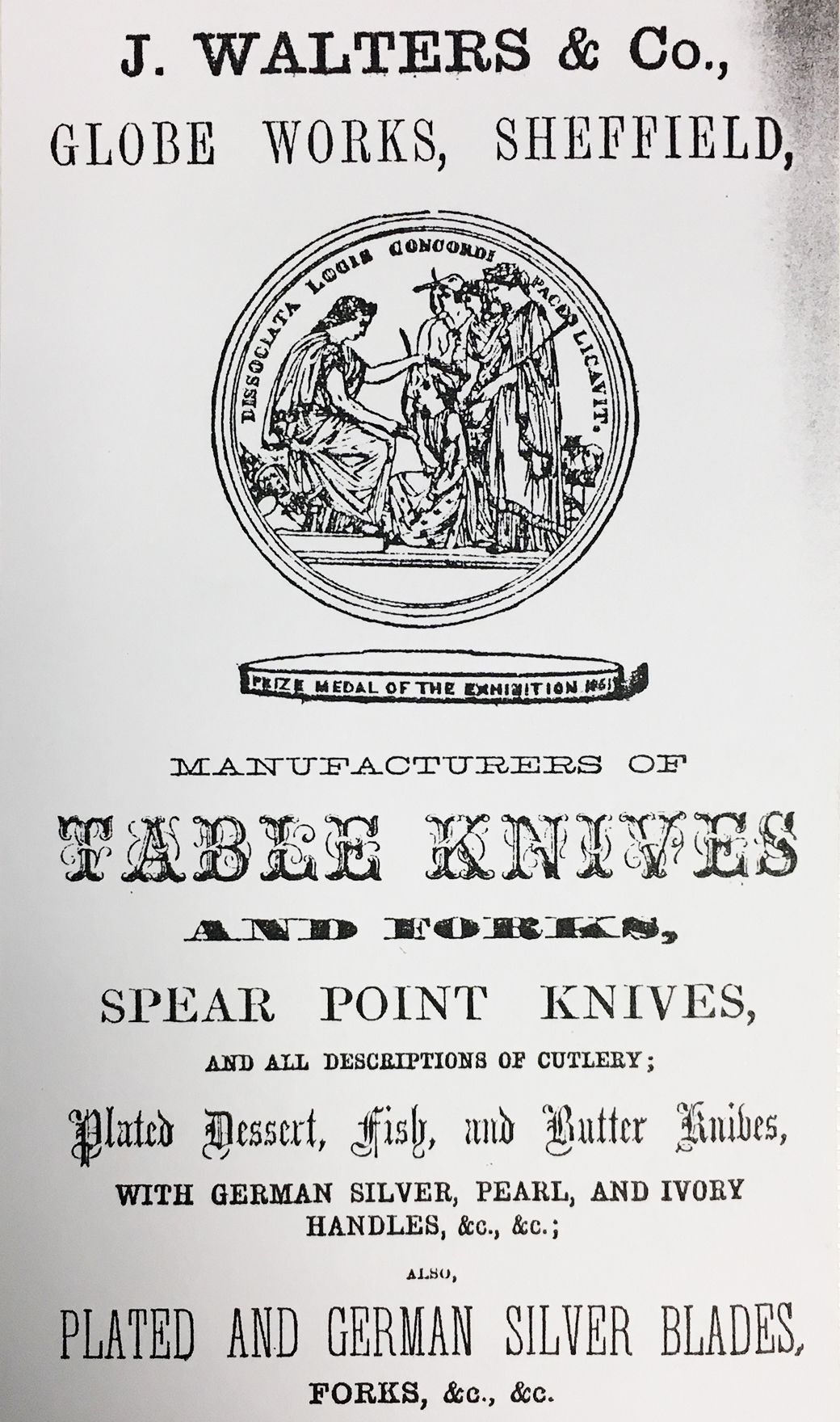
1850s - 1860s
By 1851, the financial situation for Ibbotson Brothers Company had improved enough for them to mount a successful display at the Great Exhibition in London. The company provided an excellent exhibition of ivory-tipped and stag-handled table knives and forks, dessert knives and forks, venison carvers and American hunting knives. However, pride of place was given to their cast steel and edge tools, for which a Prize Medal was obtained.
William Ibbotson died in 1852, and the company passed to his widow, Mary, and sons William F. Ibbotson and Alfred B. Ibboston. His other sons Henry and Samuel also became active in the firm who had staffed their Manhattan office. Although their transatlantic trade has continued, the start of the American Civil War in 1861 disrupted the usual trading channels, and American manufacturers were quick to take advantage.
With the decline in US trade, the Ibbotson’s left the Globe Works, and sold to John Walters & Co. in 1862. The Ibbotson’s moved to premises on Alma Street and Russell Street, and named their new factory ‘Globe Steel Works’.
John Walters & Co. had been trading at the Globe Works since around 1850. In 1851, John Walters also exhibited at the Great Exhibitions, and won a Prize Medal. According to the 1851 census, he employed 300 workers making the firm one of the largest in Sheffield at the time.
Their move to the Globe Works in the 1850s from Craver Street, coincided with the heyday of the American trade. John Walters & Co. although made a variety of table and dessert knives and forks and palette knives, they specialised in Bowie and dagger knives. Some of their products were outstanding and were displayed at the Cutlers’ Hall.
When John Walters & Co. operated the Globe Works in its entirety in 1862, the company were advertised as ‘Manufacturers of Every Description of Table and Spring Cutlery’. However, it also traded as a steel and tool merchant. John Walters had married Eliza, the sister of Philip Unwin, the founder of Unwin & Rodgers.
The ownership of the Globe Works by John Walter was short lived, as the collapse in the American trade claimed another victim. In 1864 John Walters & Co. sold its stock and entered bankruptcy proceedings.
In 1865, the Globe Works was occupied by Unwin & Rodgers who acquired John Walters & Co.’s name and trademarks. Unwin & Rodgers was established c. 1828 by Philip Unwin and James Rodgers, and were advertised as manufacturers of pen, pocket and desk knives, pearl slides, clasps and buckles, based in Charles Street. Rodgers died soon after, however, in 1829, and so the business continued under Philip Unwin.
Under Philip Unwin the company expanded with the booming American trade, and by the end of the 1830s the company was marketing ‘Self-Defence Knives’; lock and sneck knives, daggers and dirks. They went on to produce a distinctive ‘pistol-knife’ which was a pocketable combination weapon that had a folding dagger with small percussion pistol built into the handle.
Unwin & Rodgers were prolific advertisers, and provided a fine show at the Great Exhibition in 1851, winning a Prize Medal.
As with the other companies, Unwin & Rogers relied heavily on the American market. When the US trade slumped, Philip Unwin attempted to improve the situation by purchasing John Walters & Co. trademarks and began to occupy the Globe Works as well as continuing to occupy their established company premises at Rockingham Street.
Although Unwin & Rodgers occupied part of the Globe Works, much of the Works was tenanted by this time. The arrangement of multiple firms occupying a works complex was commonplace and continued the tradition of ‘Little Mesters’ works.
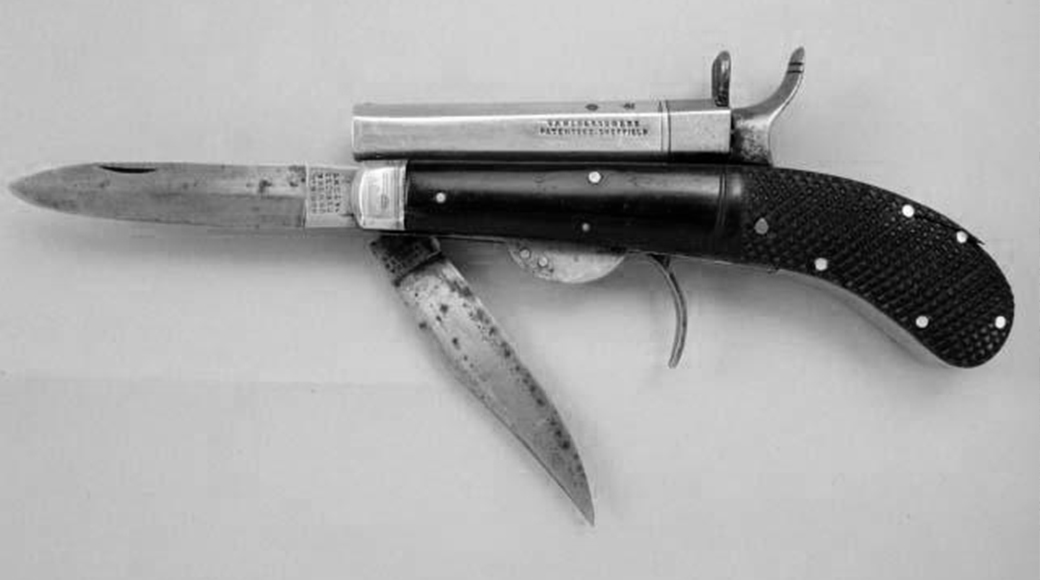
1870s - 1910s
Philip Unwin died in 1878 and the company passed to his son, Philip H Unwin. As their products became outdated, the business looked to an emerging electro-plate market, and became involved with John Brook & Son and Sheffield Nickel & Silver Plating Co. which they accommodated at Rockingham Works and Globe Works. They were all soon in difficulty, however.
In 1882, Unwin & Rodgers auctioned 8,000 dozens of fine pen and pocket knives and show knives. The following year, they were bankrupt. In fact, the particulars and plan for the sale at auction of the Globe Works ‘…and machinery, trade fixtures, marks and goodwill of the manufacturing cutlery business carried on by Messers. Unwin & Rodgers, Limited’ date to December 1883, and set out their assets at the site.
The Lot included:
- Show room and offices
- Warehouses
- Numerous workshops
- Grinding wheels, three storeys in height
- Engine House
- Boiler Shed
- Stabling
- Carthouse
- and other buildings.
Whilst the machinery included:
- one 40-HP beam engine
- one 12-HP engine
- three large boilers
- large wrought iron water tanks
- shafting and driving gear for about 30 grinding wheels and workshops
The sale also included the trade names and marks acquired and used by Unwin & Rodgers.
The extent to which the assets were sold is not clear, however, Philip H. Unwin managed to keep the business going, which remained at the Globe Works, until his death in 1909.
During the later 19th and into the early 20th century, another firm present at the Globe Works was Ball Brothers & Company. The Ball brothers were James and William who had begun their business in c. 1883. Their father was James Ball, co-founder of Burgon & Ball, the well-known makers of sheap shears. Ball Brothers at the Globe Works also made patent sheep shears, with the company moving into the production of swords and general cutlery in the early 20th century.

1920s - 1970s
Albert Sanders, formerly a table knife grinder, became a cutlery manufacturer at the Globe Works around 1925. In 1931 he partnered with Charles William Bowers to create Sanders & Bowers. In 1932, however, Bowers withdrew from the partnership. Albert Sanders’ sons, Albert, Ronald and Frederick, joined him in the business which became Ltd. in 1947. The company produced stainless cutlery, electro-plate, case goods, spoons, forks and pen knives. Their ‘Friar’ mark was acquired from George Gill & Sons. Albert Senior died in 1954, but his sons went on to create the ‘Friar Edge’ range of kitchen knives. Sanders & Bowers Ltd was bought by John Price in 1978, of Arthur Price & Company Ltd (Later Arthur Price of England).
In the 1950s, the assets and trademark for Ball Brothers & Company were acquired by George Barnsley, located adjacent to the Globe Works.
By the 1970s, the cutlery and steel industry in Sheffield was in a steep decline. In 1970, Sheffield Town Planning Committee called for the Globe Works to be delisted so that it could be demolished to make way for an urban motorway. However, the request was declined. Subsequently, 1978 saw the closure of the Globe Works. The Works fell into dereliction and was extensively damaged by an arson attack in the same year.

1980s
In 1987, Sheffield City Council acquired the Globe Works and commissioned a feasibility study by URBED (1988) to assess its future. The study concluded that a scheme with providing managed workspace, a cutlery showroom and a pub and restaurant would be the most viable option. The Council went into a partnership arrangement with the Leadmill Association which was approved as a ‘Local Authority Company’.
Globe Works underwent a programme of restoration led by the Leadmill Association, and backed the Allen Tod group of architects alongside Henry Boot as principal contractor. Funding was provided by Sheffield City Council, the European Regional Development Fund (ERDF), the English Tourist Board, English Heritage and the Arts Council. The £1.5m restoration included creating a museum, visitor centre and pub called ‘The Rattener’s Rest’.
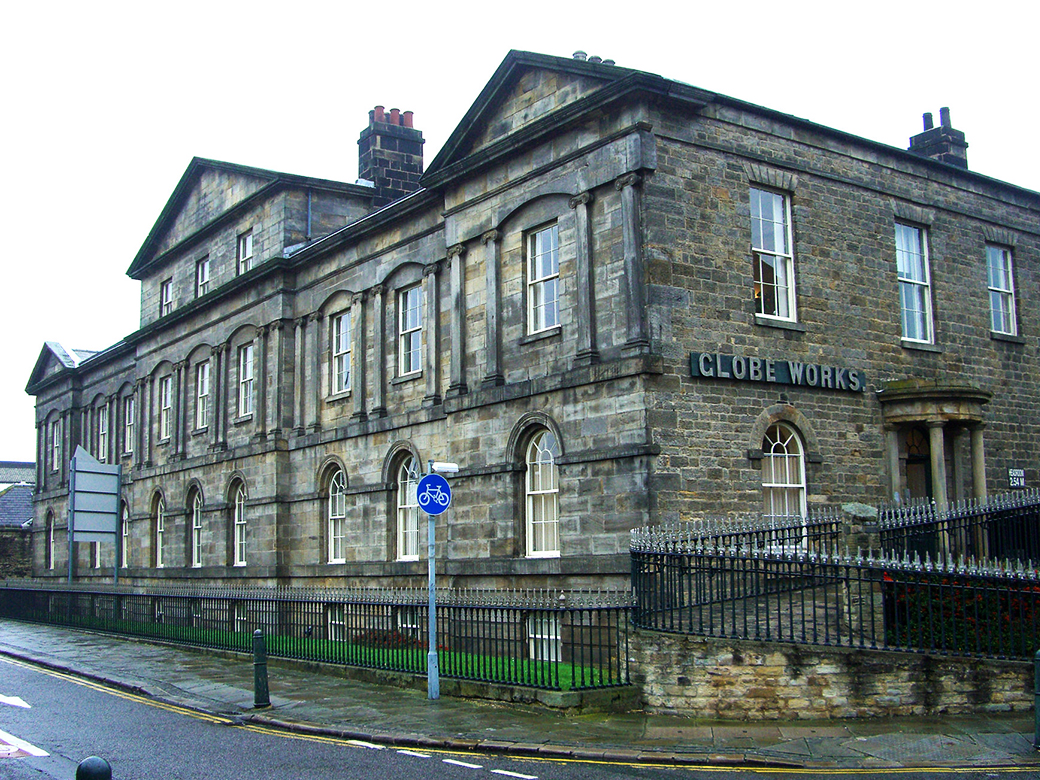
1990s
Velocity Estates bought the Globe Works in 1994 after the Leadmill Association went into insolvency. Velocity Estates undertook a complete refurbishment, retaining as much of the original fabric of the building as possible, and created approximately 30,000 square feet of office space.

2000s - Present
After spending time between 1998 and 2002 as a tenant of the Globe Works building, Matthew Davison of Kelham Estates Ltd bought the building in 2013. He had loved the heritage and history of the building, and therefore ensured that despite his enormous investment and restoration, this has always remained.
The Works is now home to numerous businesses with the office space being managed by Davison Property Investments, providing various sized offices suitable for micro, small and medium sized businesses.
Despite the building now containing over 35,000 sq/ft of fantastic mixed-use office space, the development and investment continues…
